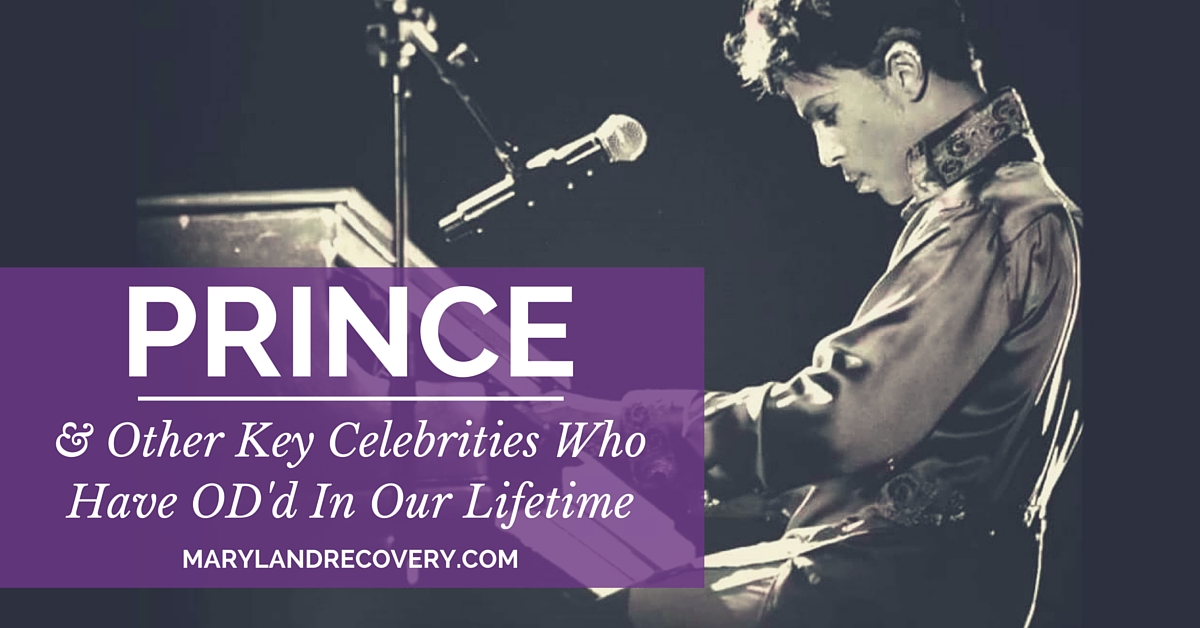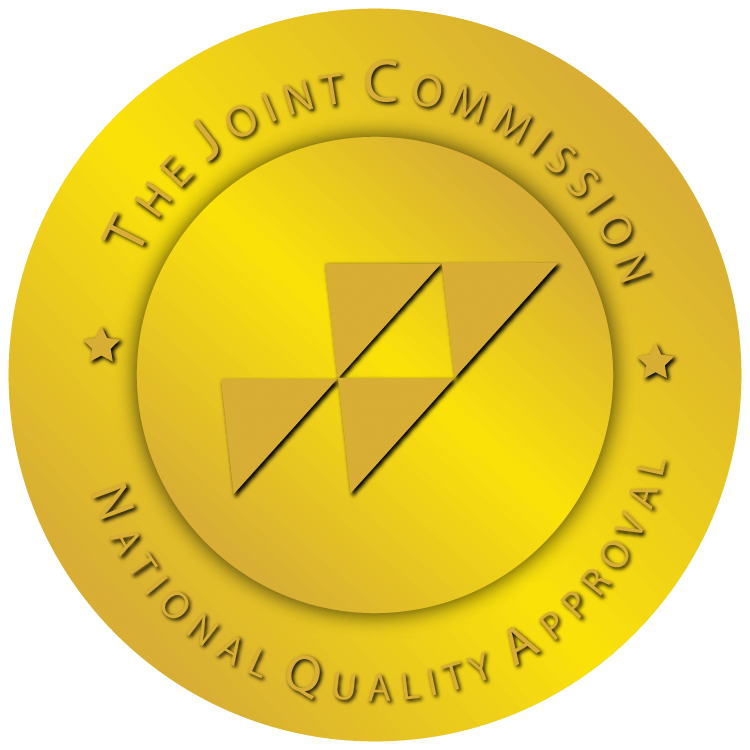
When news broke of Prince’s death more than a month ago, fans were shocked to hear of the loss. Though Prince was a famed musician, and some say that celebrities are more prone to a faster-track lifestyle, he seemed to be the least likely person to die a sudden death.
Prince led a healthy life. He was energetic. He was a proud vegan. He cared about his looks. He had exceptional drive and determination. This was hardly the face of someone who was sick, or as some speculated, someone who had a drug or alcohol problem.
But now that an autopsy has confirmed that Prince died from a fentanyl overdose, we have more questions than answers. Why was the singer taking such a harsh drug? Who prescribed it to him? Was he struggling with an opioid addiction? Or was this just an unlikely incident?
We may never know all the answers. What we do know is that opioid addiction is becoming a bigger and bigger problem both in Hollywood and in America’s suburbs. Let’s explore.
Celebrity Lives Lost From Prescription Overdoses
America has lost many great musicians to drug and alcohol overdoses. For the purpose of this post, we are going to take a closer look at the musical artists who have died from prescription drugs and opioids. The purpose is to highlight an issue that has been going on for decades and needs some real change.
- Michael Jackson died from cardiac arrest in 2009 at the age of 50. His autopsy report showed that he also had acute propofol intoxication and a mix of prescription drugs in his system, including lidocaine, diazepam, lorazepam and midazolam.
- In 1994, singer-songwriter and musician Kurt Cobain committed suicide. Heroin and diazepam were found in his body.
- In 1978, Keith Moon, drummer for The Who, died from a prescription drug overdose at the age of 32. The drug found in his body was clomethiazole, a powerful sedative.
- Elvis Presley was a cultural icon. In 1977 at the age of 42, Presley died from a heart arrhythmia that was possibly aggravated from multiple prescription drugs, including barbiturates, codeine, cocaine and methaqualone.
- Jim Morrison, lead singer for The Doors, died from heart failure in 1977 as a result of a heroin or cocaine overdose. He was just 27 years old.
- In 1970, 27-year-old musician and singer-songwriter, Jimi Hendrix, died from a toxic mix of alcohol and prescription drugs. He went into respiratory distress from the alcohol and barbiturate overdose.
- In 1970, Janis Joplin passed away from a heroin overdose at the age of 27.
- Judy Garland, American actress and singer, died from a barbiturate overdose in 1969. She was 47 years old. It’s unclear if her death was an accident or suicide.
- In 1962, American icon, Marilyn Monroe, died at 36 from a prescription drug overdose.
Then And Now: Barbiturates vs. Opioids
Looking at the aforementioned deaths, it’s apparent that the prescription drug problem isn’t exactly new. Clearly, prescription drugs were abused way back in the 1960s and 70s. The main difference between then and now is the type of prescription drugs that are abused.
In the 60s and 70s, people abused barbiturates more frequently. Marilyn Monroe, Jimi Hendrix and Judy Garland all died from barbiturate overdoses. Today, opioid drugs are more popular. Fentanyl, for instance, is a powerful opioid that is 50 to 100 times more potent than morphine.
Changing Perception Of Heroin
Heroin’s image has also changed over the years.
Fifty years ago, heroin was mostly a problem in low-income, high-crime communities. Ironically, it was also a drug used by celebrities. However, heroin was not a drug typically found in mainstream society. Most neighborhoods felt safe from heroin and were more concerned with psychedelic drugs like LSD and mushrooms, as well as marijuana.
Whether it was shrooms or heroin, the drug scene became more glamorous in the 60s and 70s. Drug use seemed to go hand-in-hand with the fast-paced lifestyle of celebs, and the effects of drugs were largely misunderstood. As people saw their favorite idols using drugs, they felt they were acceptable.
Drugs Are More Understood Today
We have made a lot of progress in terms of educating the public about the dangers of drugs. One does not have to look far to learn about the signs of addiction, the risk factors for addiction and the consequences of addiction.
Help is available in many forms, and there are TV commercials, radio ads and even celebrities themselves promoting treatment programs for those struggling with drug problems. Private, luxury treatment centers have become a highly popular option for celebrities to get the help they need, transform their life and become a positive role model for their fans.
Social Media: Does It Glamorize Drugs?
Some people feel that drugs continue to be glamorized. Social media has cut down the barriers that once existed between celebs and the general public. When celebrities are caught acting out – out in the open for everyone to see. All a person has to do is turn on TMZ or scroll through their news feeds on Facebook, Twitter or Instagram. For a young person who is impressionable, this can be mistaken for glamorization.
As we’ve seen in recent history, drugs will continue to persist in society. They will continue to be glamorized in some way, even if it’s unintentionally. What has improved is the availability of treatment options, educational resources for addicts and their families and a greater understanding of addiction as a disease, not a character flaw.
The Next “Big” Drug – What Is It?
With Prince’s death a result of a fentanyl overdose, it’s speculated that doctors are going to be more hesitant about prescribing this medication. This prudence will hopefully spill over to other opioid prescriptions as well. But as history shows, drugs don’t just go away. People find other things to use and abuse, and some believe that the next big thing will be nootropics.
Nootropics are also called smart drugs or cognitive enhancers. They include drugs, supplements and other substances that improve brain function. Many of these drugs work specifically on things like memory, creativity or motivation, all of which are highly valued in today’s fast-paced society.
People want to be smart, savvy and inspired. They want to do many things at once, multiple times a day. This is what will ultimately make nootropics so appealing. Also, because they can include any type of supplements and substances, many of them are legal and easy to obtain. This also puts users at risk for toxic mixing and overdosing.
Examples of nootropics often include:
- Amphetamine pharmaceuticals like Adderall
- Methylphenidate (improves cognitive control)
- Eugeroics (promotes wakefulness)
- Xanthenes (increases alertness and performance)
- Atomoxetine/Desipramine (improves memory and attention)
Prince’s death is a reminder that one does not have to fit the stereotypical mold of an addict to be one. Prince cared about his health and shocked his own friends and family with his sudden death. His passing is truly a reminder that the opioid drug problem can take hold of anyone.
Expert Insight From Maryland Recovery’s CEO
At Maryland Recovery, we were deeply saddened to hear of the passing of this great rock star and the reason for his untimely death. We feel empowered by stories of success, and disheartened by those that end differently.
Our very own Chief Executive Officer has taken the time to provide some addiction expert insight and answer some questions about Prince’s death and the opioid drug problem:
Q: How surprised are you to learn that someone like Prince, a major celebrity that seemed to promote a healthy lifestyle, overdosed on opioids?
A: Not surprised when a celebrity is addicted to substances. They are part of mainstream America and have pressures most people can’t comprehend. Many have easy access to drugs or medications.
————–
Q: What type of treatments do you think that someone with that type of status should turn to for their ailments when struggling?
A: Every level of care should be considered. Not sure we do celebrities any favor when we allow them to enter Country Club type facilities that cater to their every wish.
————–
Q: If a celebrity/high profile individual approached you, what kind of accommodations or unique programs would you be able to offer?
A: If a celebrity approached me for assistance I would consider residential care if appropriate after comprehensive evaluation to remove them from their current environment.
————–
Q: Where do you see the opioid epidemic going? / What direction regarding doctors prescribing, new laws and treatment opportunities?
A: When celebrities pass away under these circumstances it does shed light on the larger problem due to media coverage. Legislatures tend to get involved with public pressure in these situations. I would rather at a more basic level medical professionals become more educated in the root causes of addiction and realize that some of the medications that they prescribe in the opioid family especially, may be harmful and often set off in certain people a downward spiral towards addiction. Some medications have assisted with opioid abuse (Suboxone, methadone, and Vivitrol).
Some State legislatures are currently considering bills to control prescriptions (Registries) and Pharmacies to recognize prescription abuse.
Share Awareness About Prescription Drug Addiction Now!
As you can see from Prince’s healthy lifestyle, addiction can happen to any one of us. Often times addiction, especially prescription drug addiction, is subtle and easy to miss. Please share this article now with your friends, family and colleagues. You may just be helping a struggling loved one without even realizing it.
Reviewed by Christopher Schwartfigure MS, LGPC, CAC-AD








